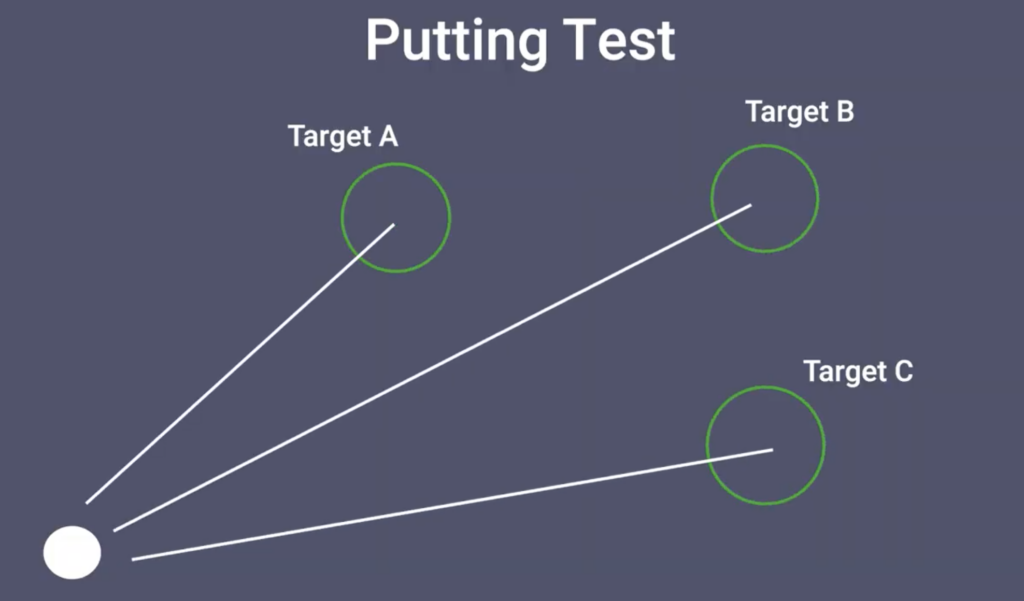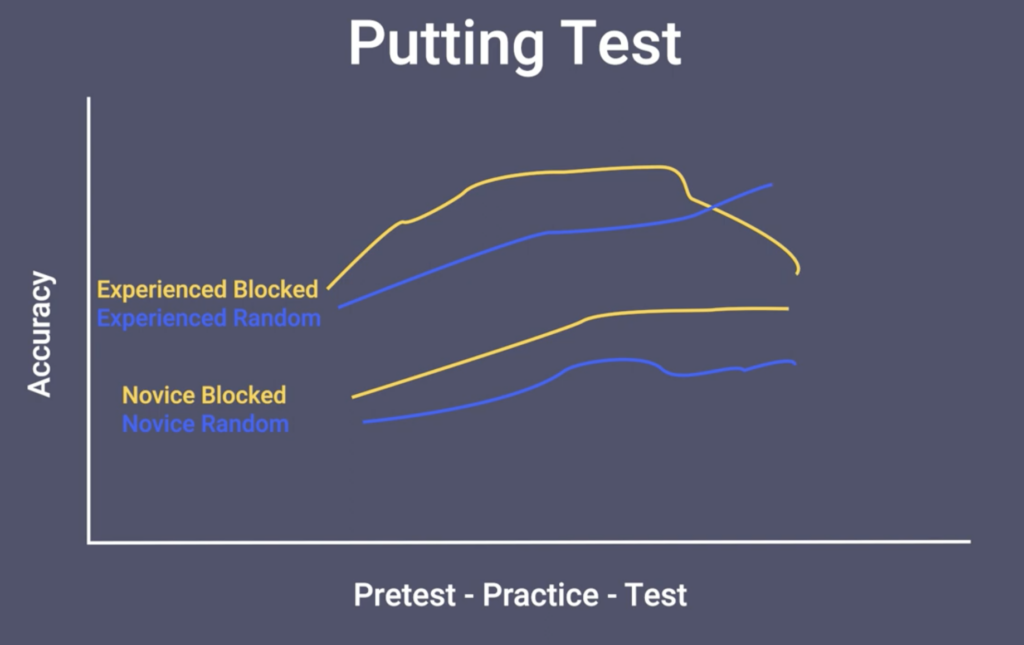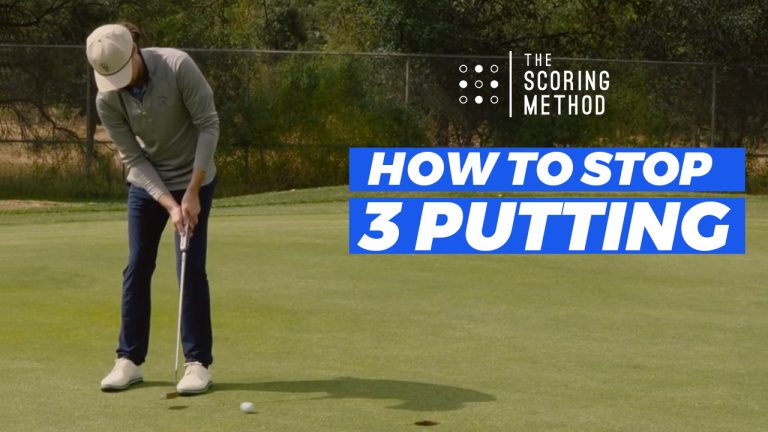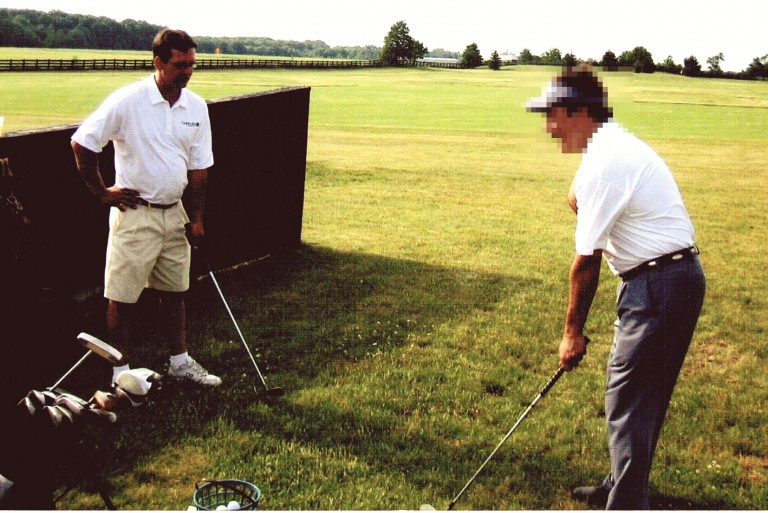Have you heard of the block vs random practice debate before?
The basic question being if you should practice the same thing over and over again or add some kind of variability (randomness) between each task.
In today’s research rundown we look at some info from Dr Mark Guadagnoli, a professor of neuroscience and neurology at UNLV.
His “Challenge Point Framework” has helped business leaders, professional athletes, surgeons – anyone who performs in high pressure situations.
People adopting this mindset have proven to learn three times faster and also be more resistant to stress in competition
In the study, participants practiced putting to three different targets. One group practiced in blocks (AAA, BBB, CCC), while the other group practiced in a random order.

The study found that during practice, the block group did better. However, the real magic happened when they looked at how much each group learned.
For novice golfers, practicing in blocks was more effective. They performed better during practice and also retained more.
However, for experienced golfers, even though they performed better in blocks, they actually learned more when practicing in a random order.

Block practice was simply too easy (and probably quite boring) for the more skilled player. Yet for those just learning, the repetition was beneficial as they grooved their stroke and developed feel for the speed.
Perhaps the most important point in the video is Guadagnoli’s observation that the success rate should be around 65-70 percent.
Too often, better players expect to be perfect in the practice area. This isn’t realistic. Besides, there is value in the good and the bad.
“Don’t worry about those times you are failing,” Guadagnoli said. “Those are important trials for you to be able to get comfortable being uncomfortable. That’s exactly what’s going to help you learn. Do you want to look good now or be great later?”
People need adversity, setbacks, and perhaps even trauma to reach the highest level of strength, fulfillment, and personal development.
Practical Takeaways:
- Understand Your Level: If you’re a beginner, it’s more effective to focus on one aspect of your game at a time. Embrace the block practice concept .
- Embrace Variety as You Progress: As you gain experience, mix it up. Introduce variety in your practice sessions. This could mean practicing to different targets or with different clubs instead of just doing the same action again and again.
- Seek the Sweet Spot of Challenge: Aim for a 65 to 70 percent success rate in your practice. It’s okay to fail about 30-35 percent of the time, as it helps in long-term learning.
- Focus on Long-term Learning, Not Short-term Performance: Don’t worry too much about how well you perform during practice. Instead, focus on challenging yourself to optimize long-term learning.
Learn more from Dr Mark on his new Youtube Channel The Academy. He’s got some great insights he’s sharing you won’t want to miss!



